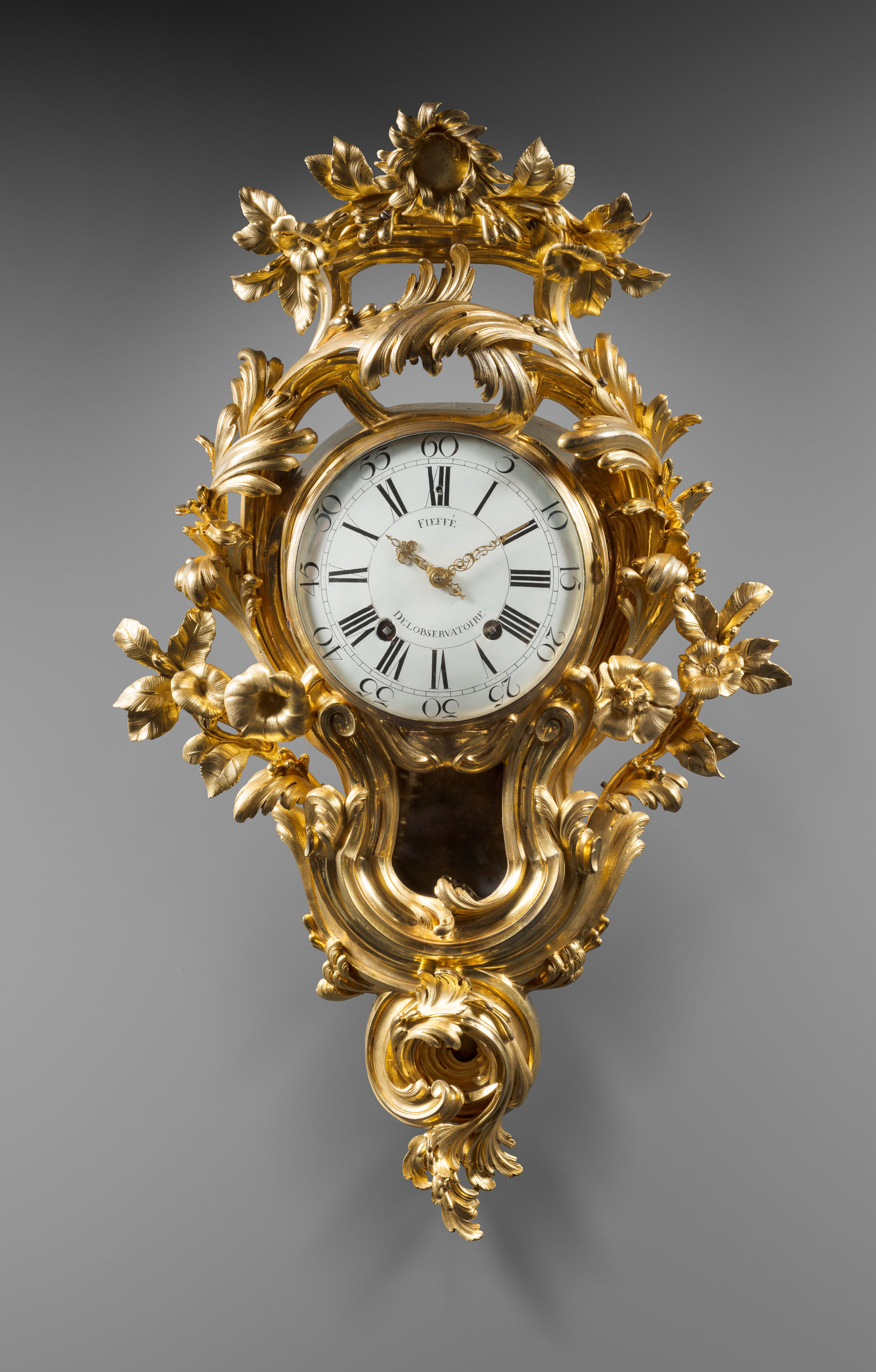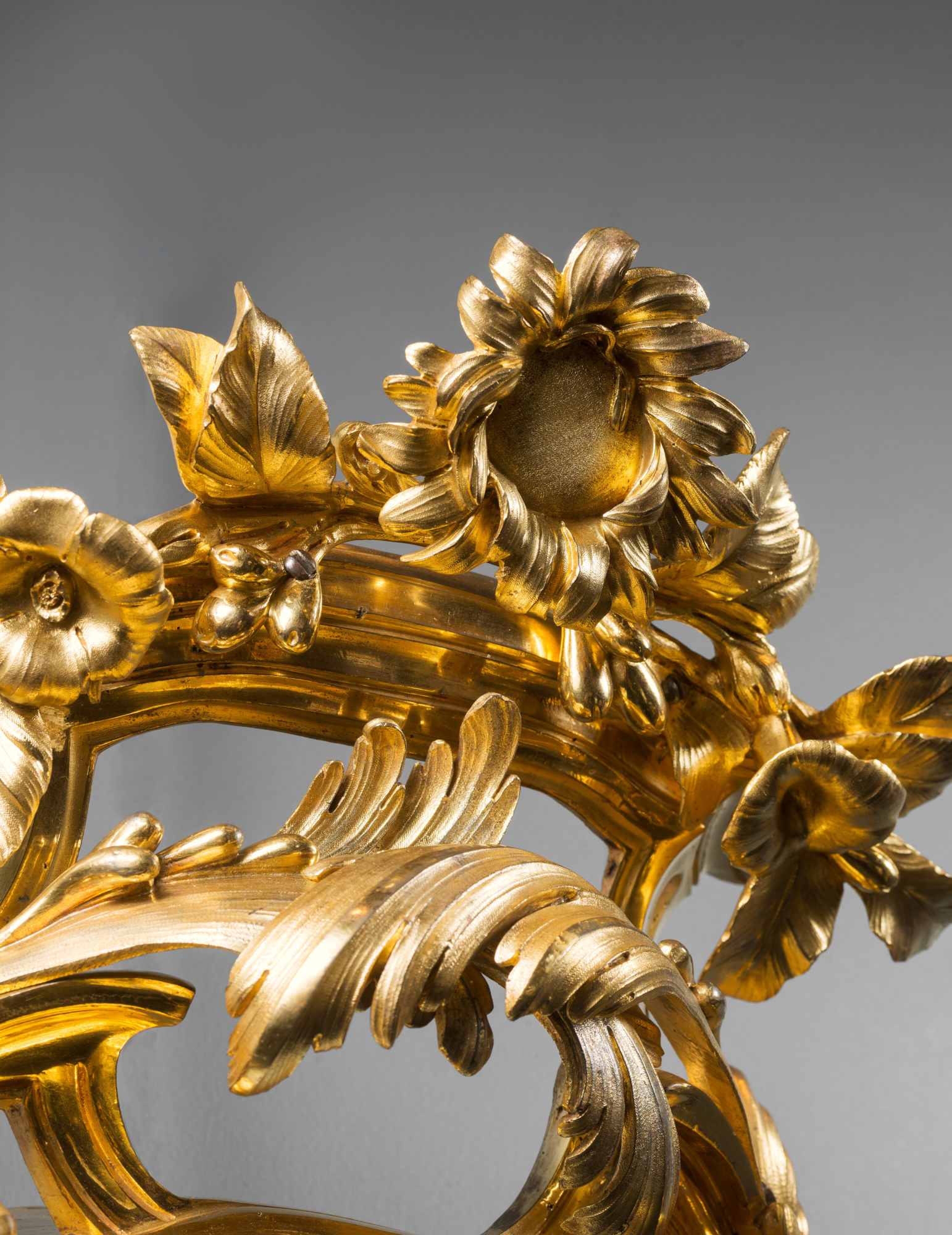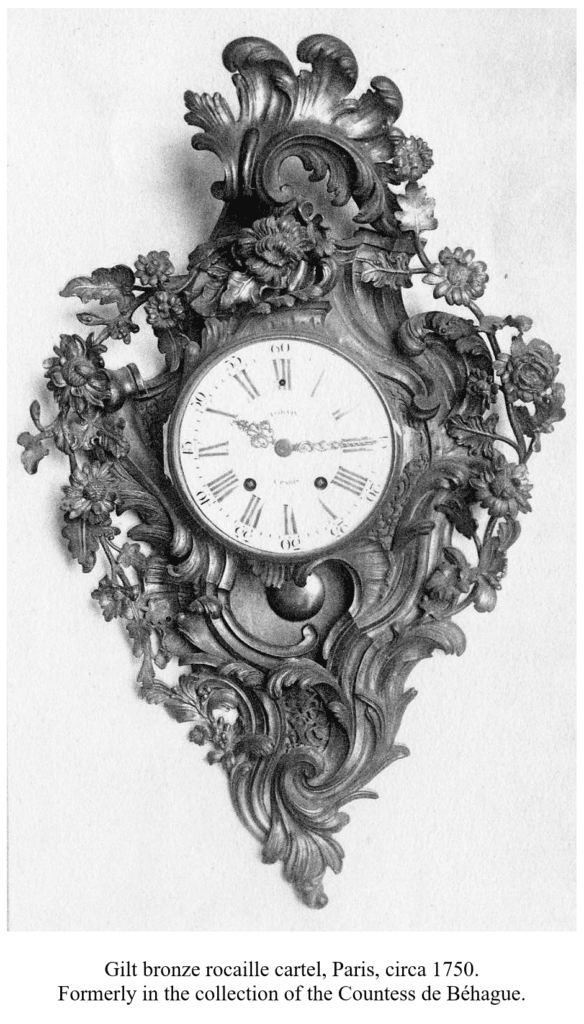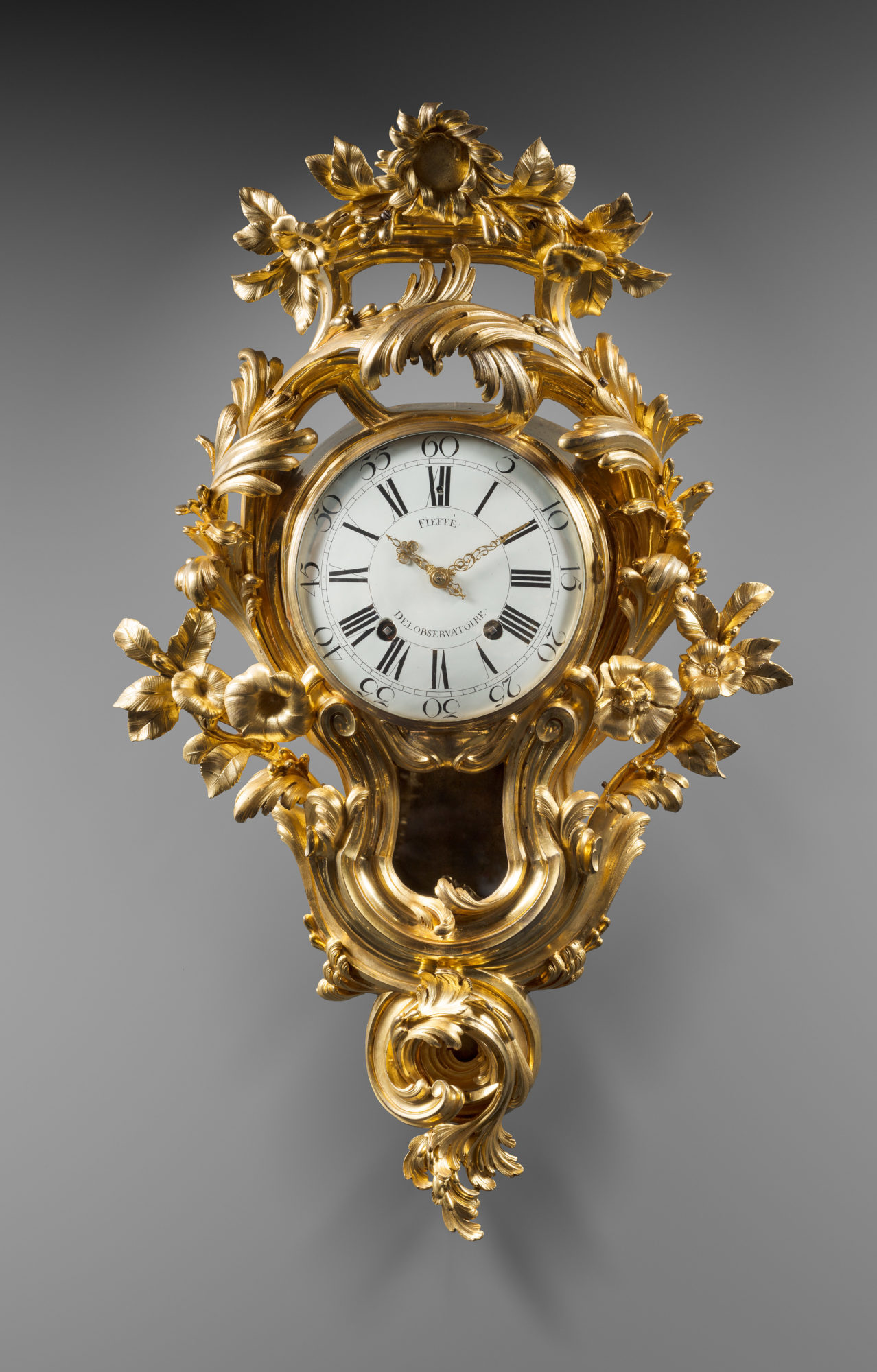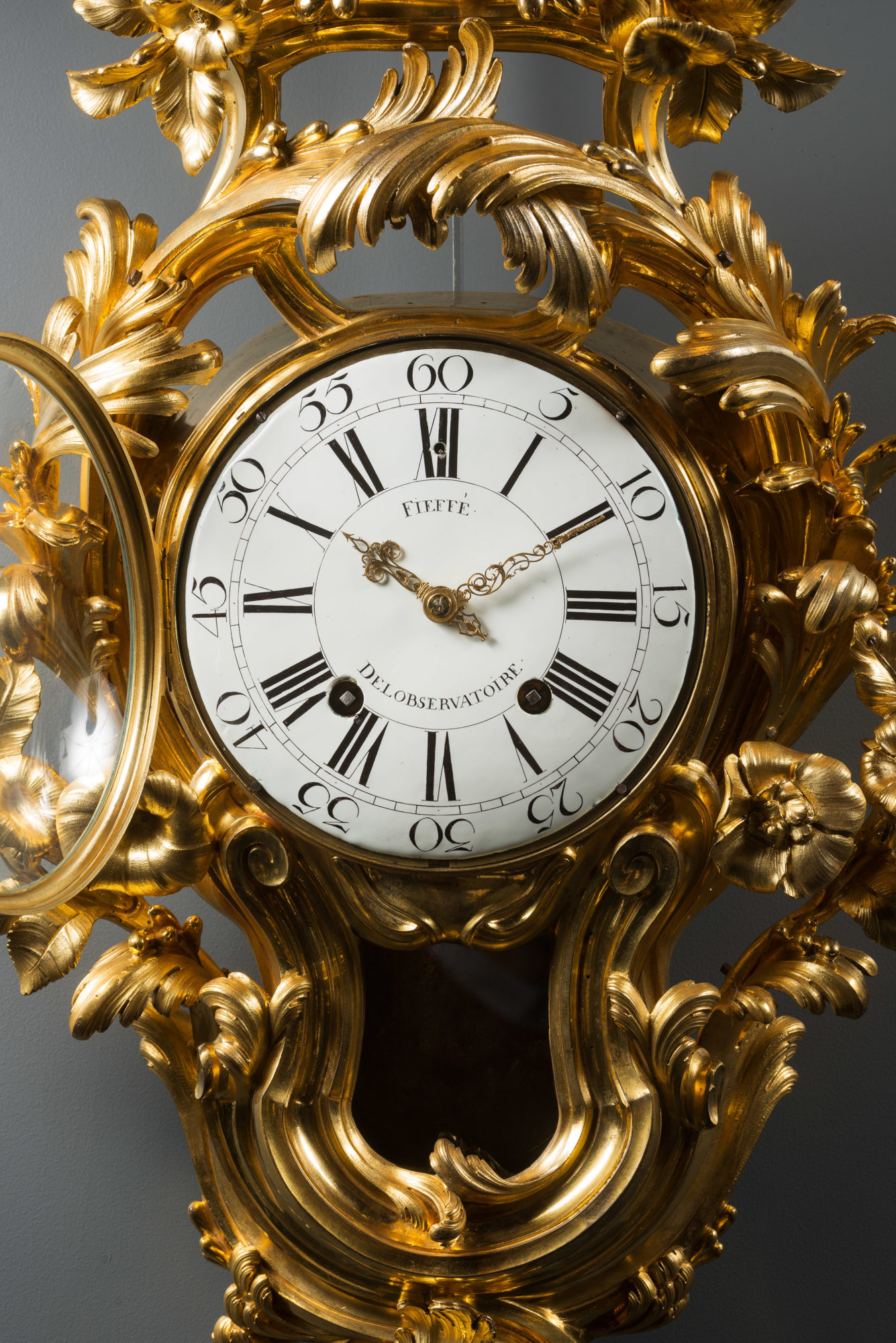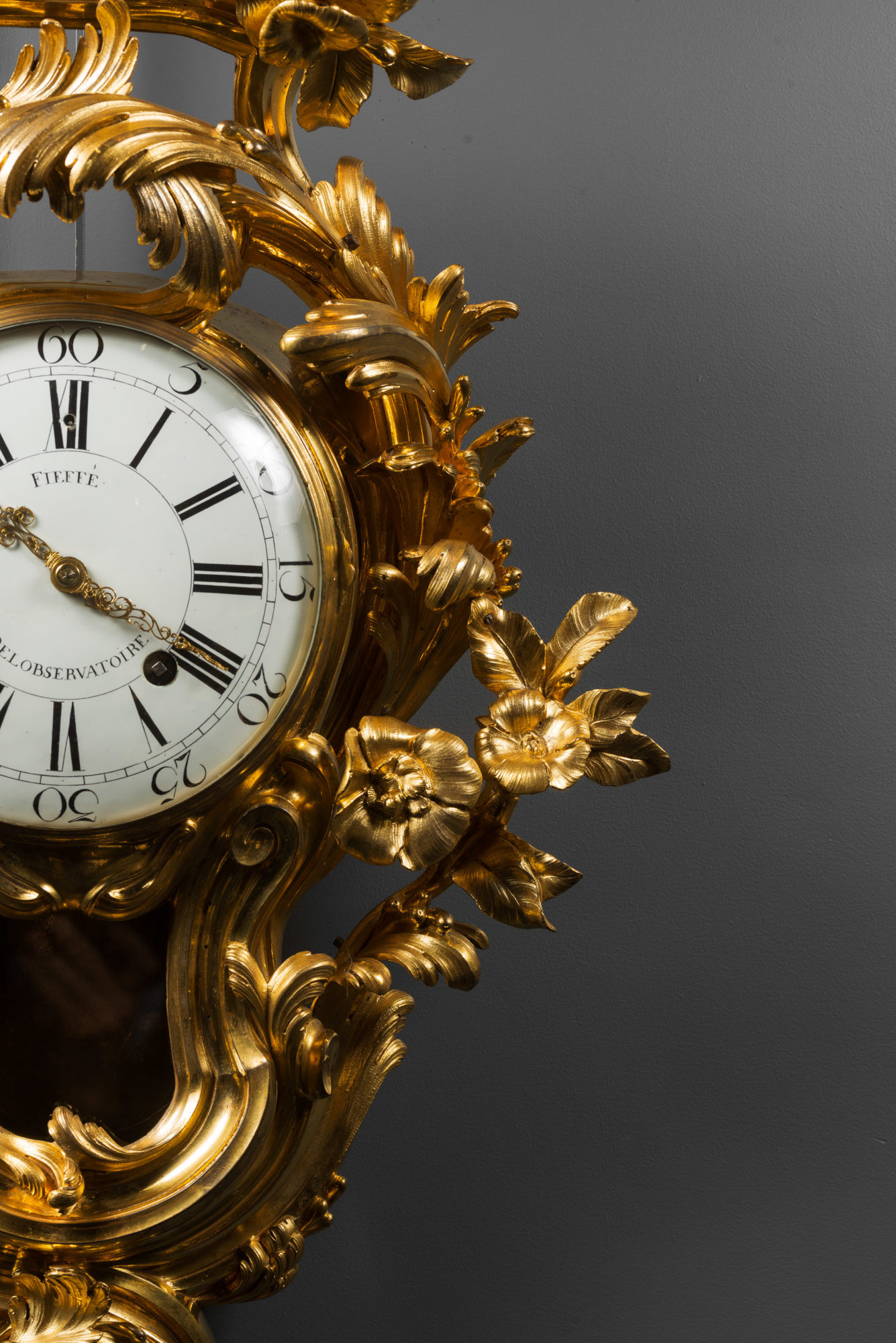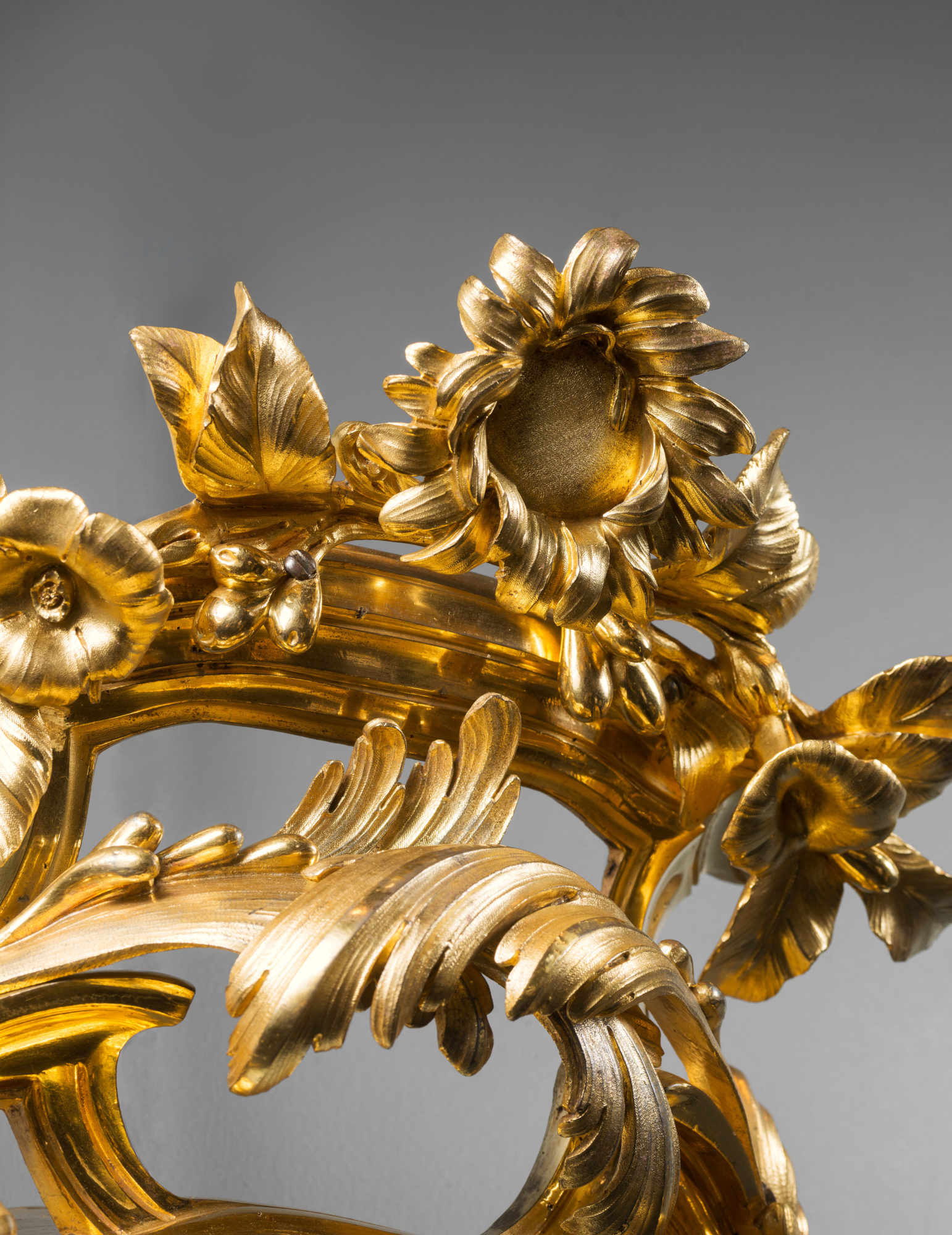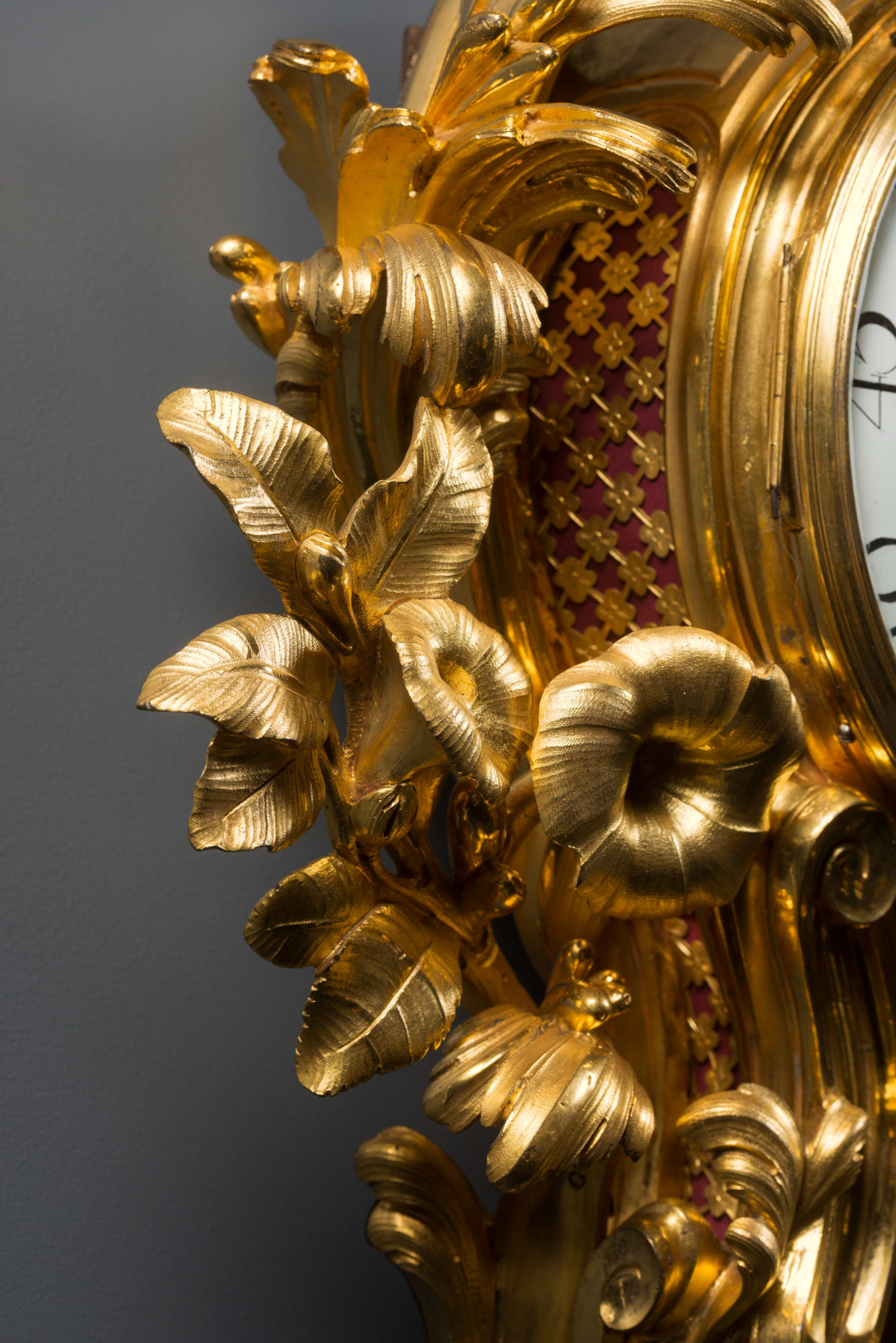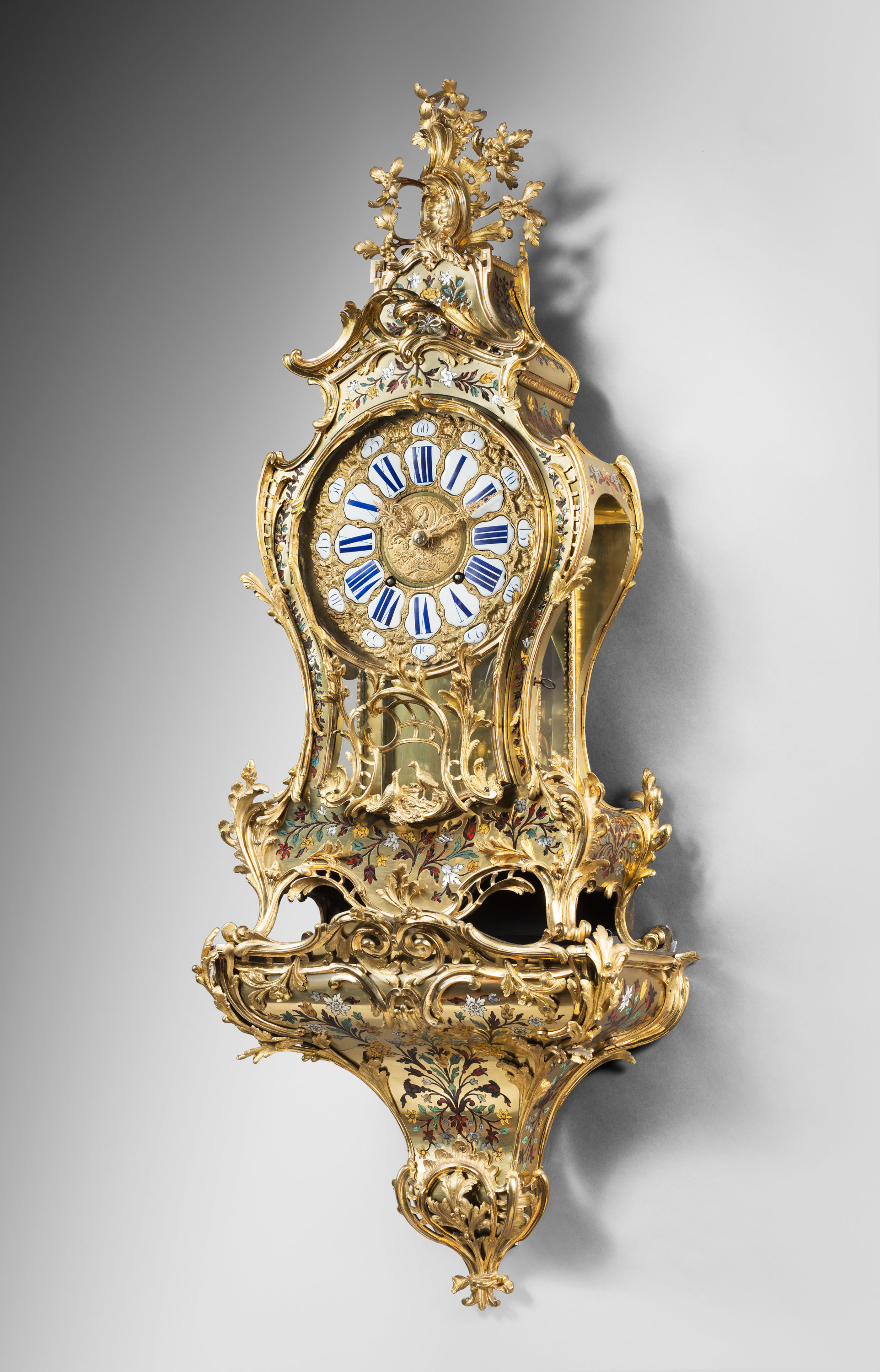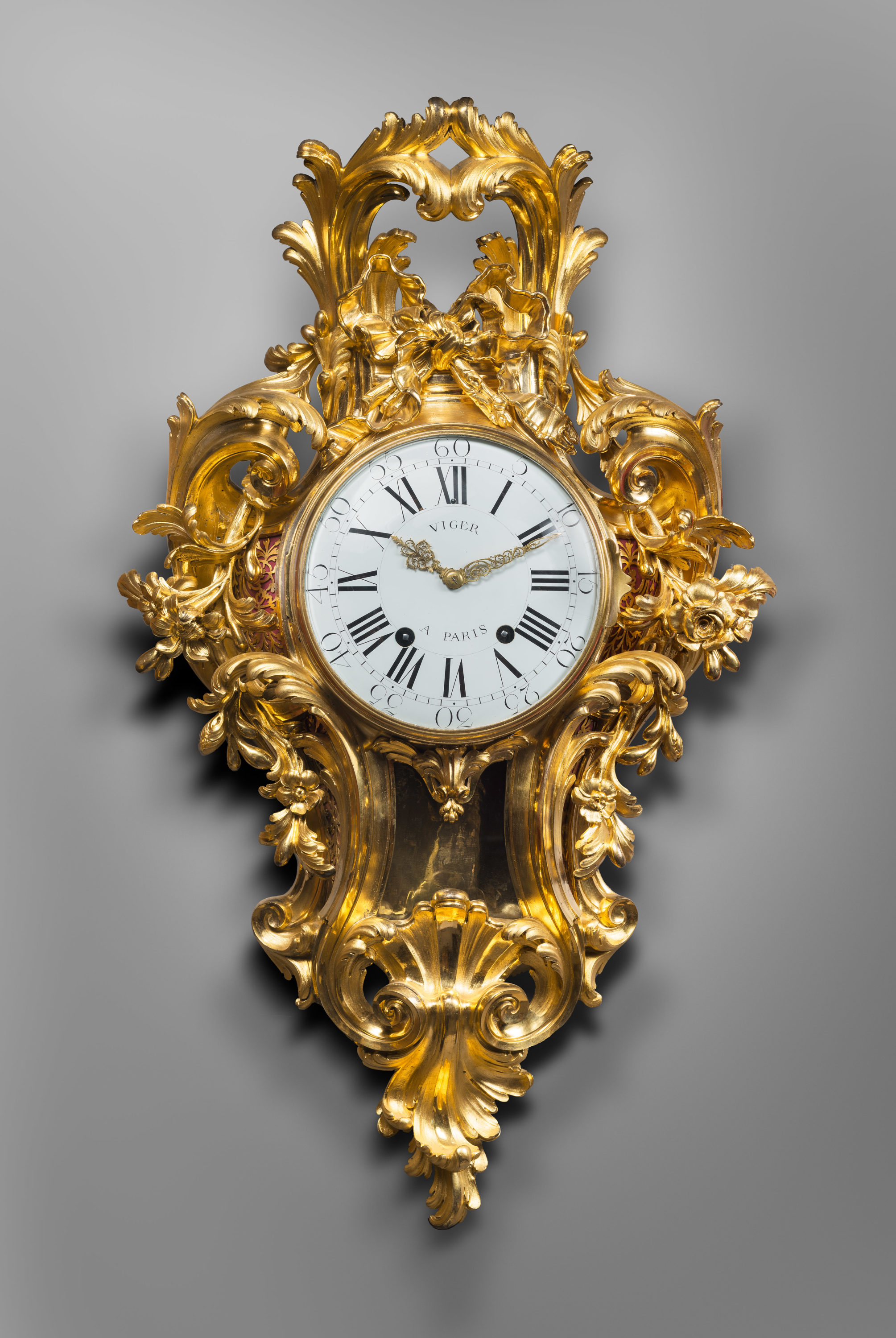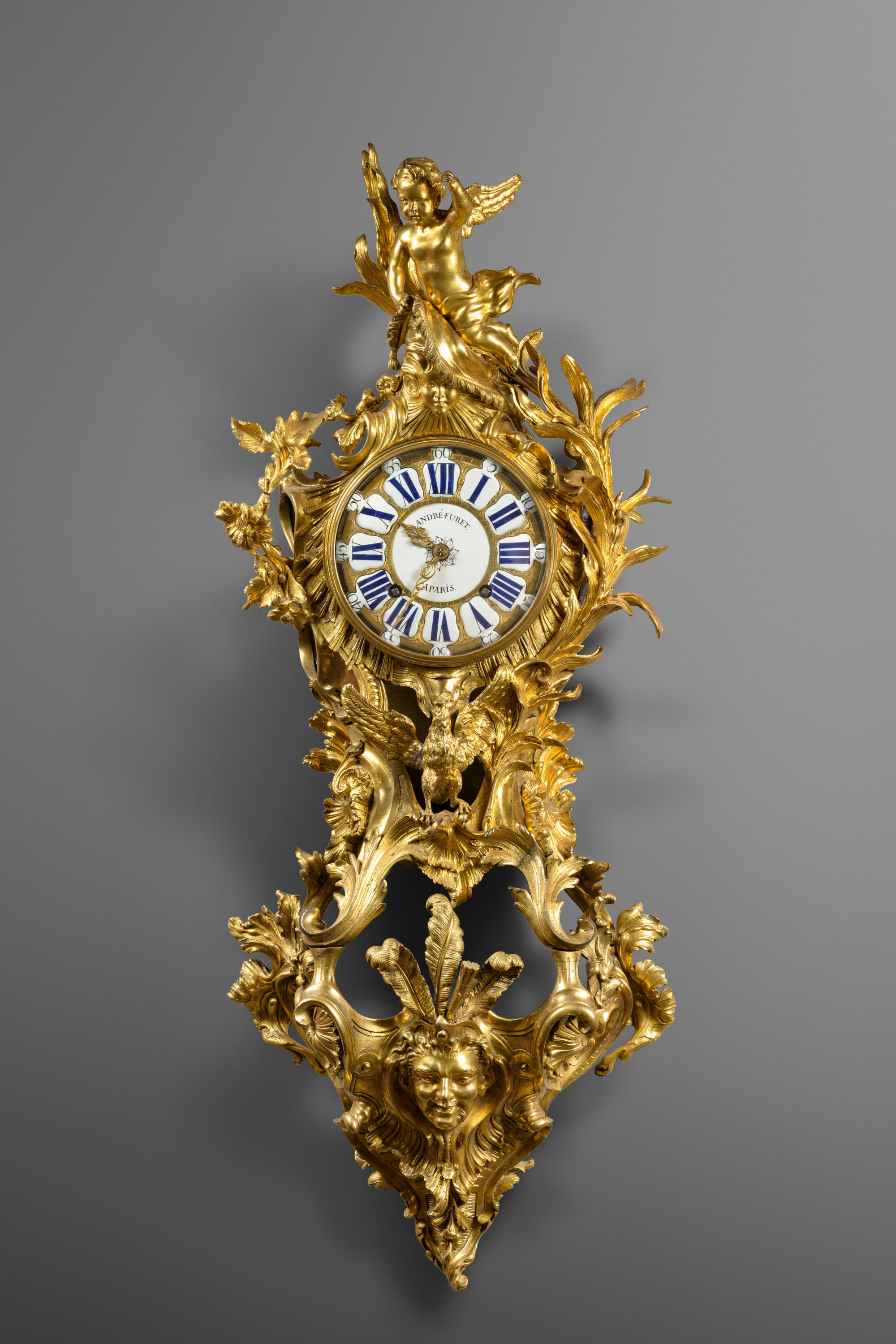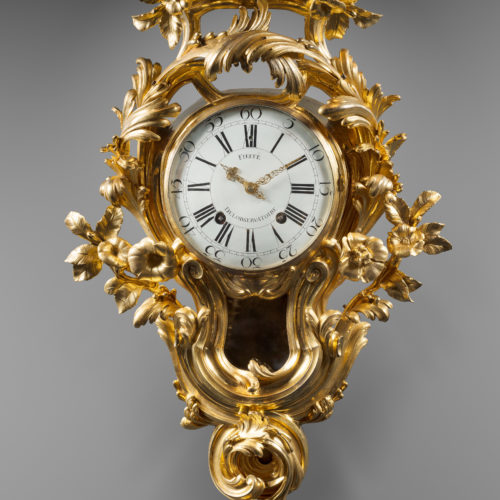Important Gilt Bronze Rocaille Wall Cartel
The round enamel dial, signed “Fieffé de l’Observatoire”, indicates the hours in Roman numerals and the five-minute intervals in Arabic numerals, by means of two pierced gilt bronze hands. The fine gilt bronze rocaille case is slightly asymmetrical; its gilding and chasing are exceptional. It is elaborately decorated with scrolling foliage, moulded scrolls, acanthus leaves and leafy branches with berries and flowers. The lower portion is adorned with C scrolls; the clock is surmounted by a portico adorned with flowers and a central sunflower blossom. The sides, lined with red cloth, feature pierced latticework with flowers.
Discover our entire collection of antique cartel clocks for sale online or at the gallery.
This unusually large wall cartel is a spectacular example of the finest in mid-18th century Parisian craftsmanship. Its design relates to the work of important bronze casters of the time, including the Osmonds and Jean-Joseph de Saint-Germain.
Few similar clocks are known, among them an example in the Royal Swedish Collection (illustrated in J. Böttiger, Konstsamlingarna a de Swenska Kungliga Slotten, Tome I, Stockholm, 1900, plate 42); a second clock, adorned with sunflowers, was formerly in the collection of the Countess de Béhague in the Fleury-en-Bière château (sold in Paris, Galerie Georges Petit, December 5-6, 1927, lot 36); a third example, signed Saint-Germain, is illustrated in G. and A. Wannenes, Les plus belles pendules françaises de Louis XVI à l’Empire, Florence, 2013, p. 85; a further example, signed Saint-Germain, is pictured in H. Ottomeyer and P. Pröschel, Vergoldete Bronzen, Die Bronzearbeiten des Spätbarock und Klassizismus, Munich, 1986, p. 116, fig. 2.5.8; a fifth example, with dial signed Viger à Paris, and also decorated with sunflowers, is in the Basel Historisches Museum (illustrated in Tardy, La pendule française, Ier Partie: De l’Horloge gothique à la pendule Louis XV, Paris, 1967, p. 188); a final example is in the Sémail collection (see G. Mabille, Le style Louis XV, Editions Baschet et Cie, Paris, 1978, p. 177, fig. 3).
Jean-Jacques Fieffé (circa 1700 - 1770)
Jean-Jacques Fieffé was one of the most famous Parisian clockmakers of the Louis XV period. After he became a master in October 1725, he opened his workshop, Quai de l’Horloge. Named Horloger de l’Observatoire, he was very successful among important Parisian connoisseurs of fine horology. The Duke de Chaulnes was one of his clients; several of the greatest collectors of the second half of the 18th century owned clocks made by him, including two pieces belonging to the Abbot Michel-Claude Judde, and Robert Galleran des Roziers, vaguemestre de la Maison du Roy; a small cartel d’alcôve by him belonged to Marie-Maximilienne, Princess de Salm-Kirbourg.
